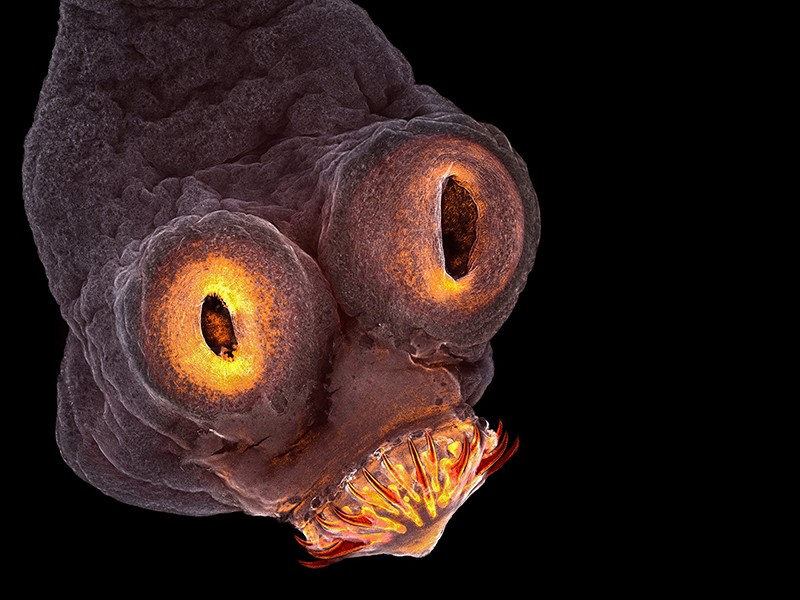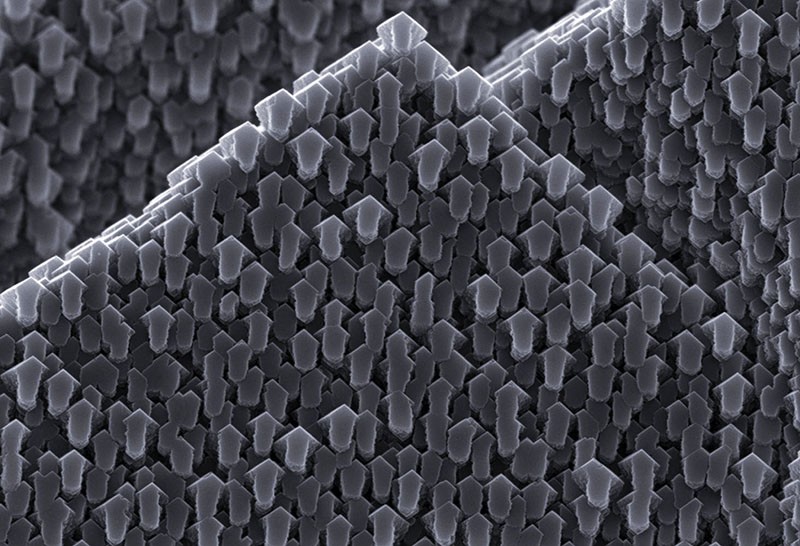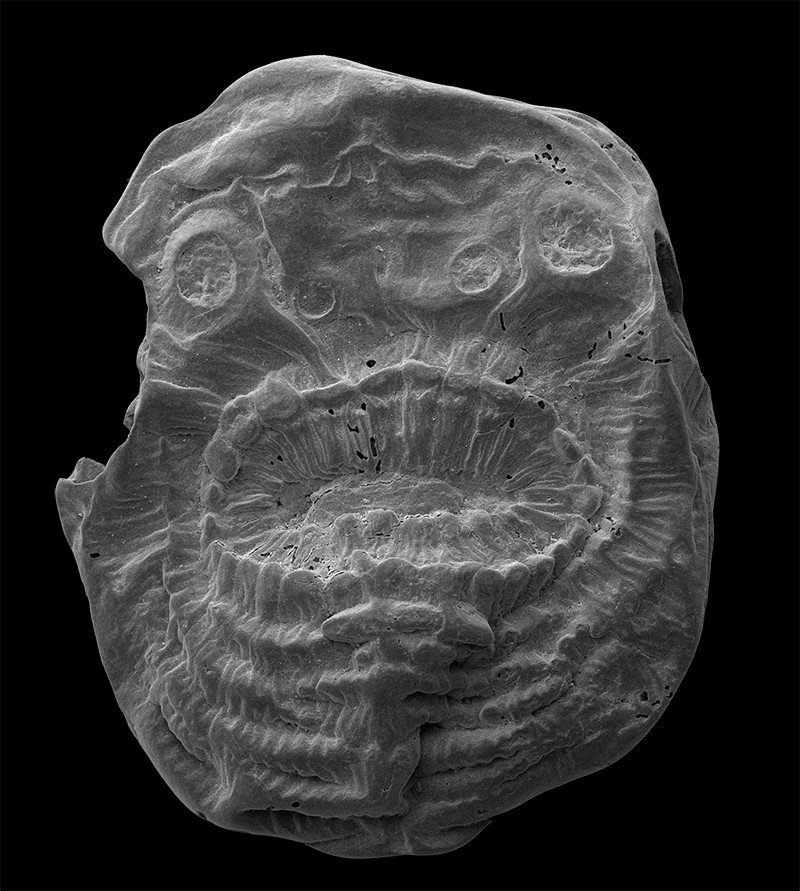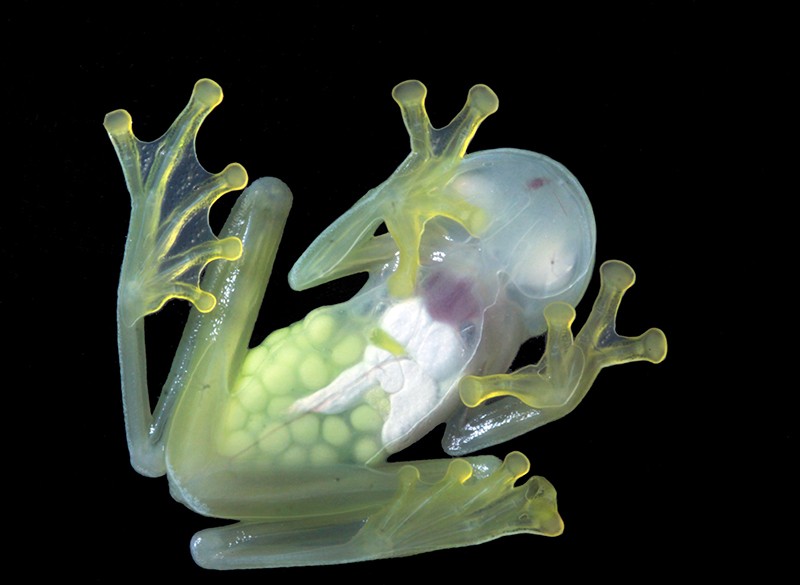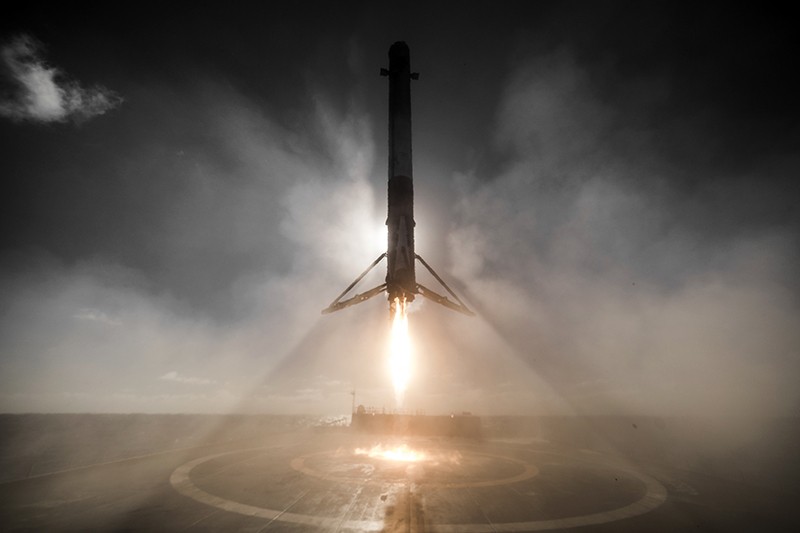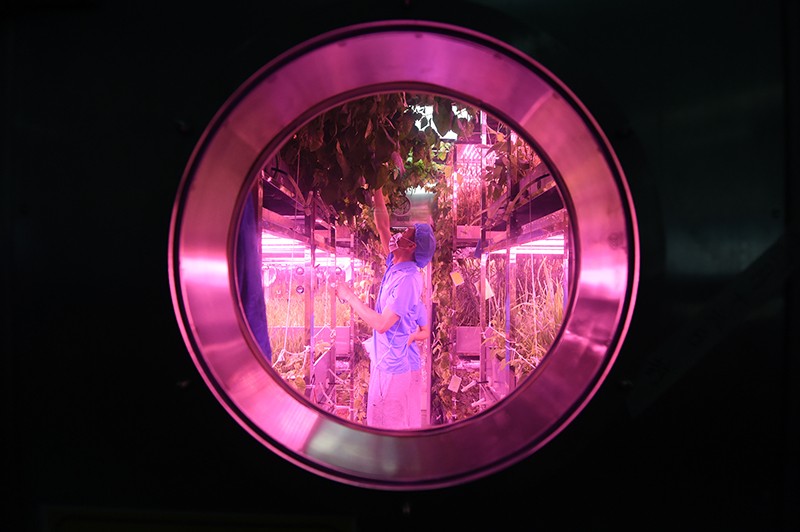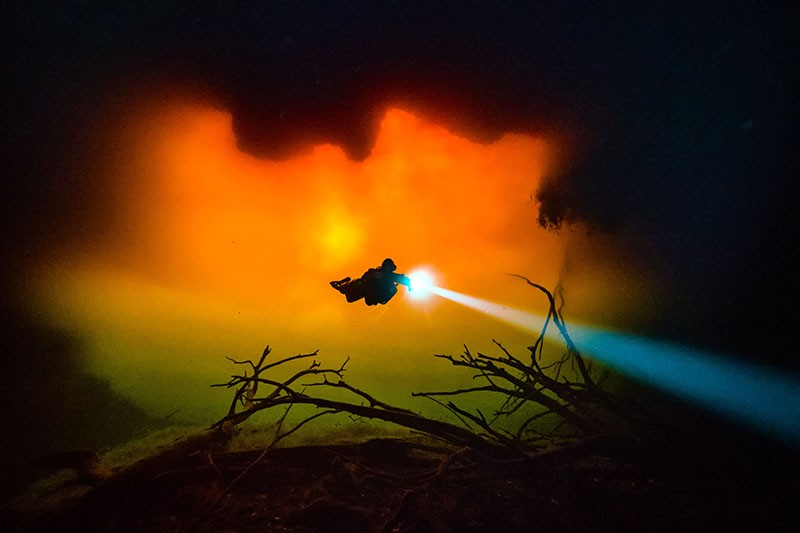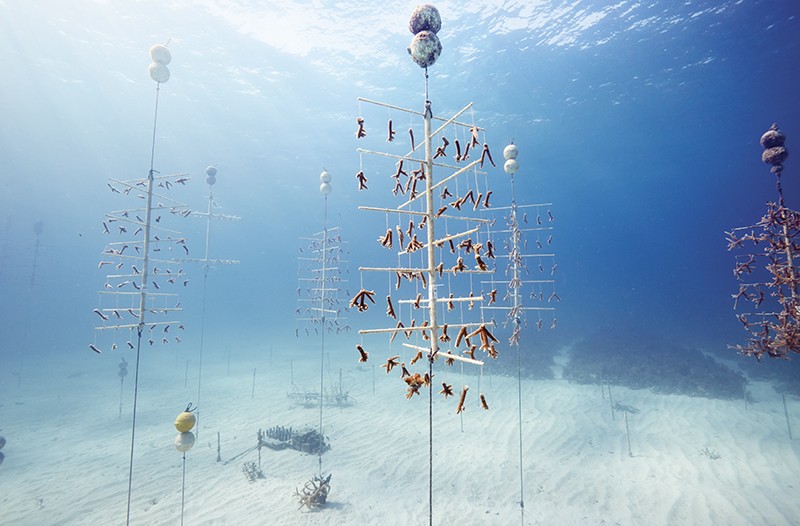January 19, 2018
A spectacular total eclipse, hitch-hiking octopus, nanoscale fireworks and more. PDF version
The spectacular total solar eclipse that swept the United States dominated headlines as it delighted scientists and the public alike in August 2017 (the above image of the Moon transiting across the Sun was taken by NASA’s Solar Dynamics Observatory spacecraft in the extreme ultraviolet spectrum). The year also brought innovations in spaceflight and surprising insights into species past. Here are the striking shots from science and the natural world that caught the eyes of Nature’s editors.
Credit: Teresa Zgoda/Nikon Small World
WORM FROM HELL: This nightmarish creature is the pork tapeworm Taenia solium, captured at ×200 magnification. The image was a finalist in Nikon’s Small World photography competition.
Credit: David Green/RPS Images for Science
THE ONLY WAY IS UP! The arrow-shaped relief on this calcite crystal, imaged by a scanning electron microscope, is governed by a protein that binds to the crystal surface and patterns it as it grows.
Credit: Craig Burrows
UNDER THE LIGHT: This ultraviolet-light image by US photographer Craig Burrows reveals the hidden hues of an anemone flower.
Credit: Michael B. Hardie/Smithsonian
BACK-SEAT OCTOPUS: This interspecies piggyback ride was caught by photographer Michael Hardie in the waters off Hawaii. The image was a finalist in the annual Smithsonian.com photo contest.
Credit: Reuben Wu
GROUND CONTROL: On the Norwegian island of Svalbard, low sun backlights an antenna that downloads data from the Joint Polar Satellite System-1. The craft launched in November as the first of a new set of US weather satellites.
Credit: Robert Lamberts/Plant & Food Research
SPARKS FLY: This tiny firework display was made by ‘electrospinning’, in which an electric charge draws fibres from a liquid.
Credit: Jian Han
FEARSOME FOSSIL: Meet Saccorhytus coronarius, a millimetre-scale fossil at least 529 million years old. The species, reported in January, might be the oldest known member of the deuterostomes, the animal group that includes vertebrates.
Credit: Jesse Delia/Boston Univ.
SEE-THROUGH PARENT: The eggs inside this pregnant ‘glass frog’ (Hyalinobatrachium colymbiphyllum) are clearly visible through its transparent belly.
Credit: Martin Oeggerli/micronaut.ch/ETH Zurich/University of Basel
A SINGLE CELL: What does a human cell weigh? In October, researchers in Switzerland unveiled this cantilever scale designed to detect minute fluctuations in a living cell’s mass.
Credit: SpaceX
BACK TO EARTH: US firm SpaceX made strides with its reusable-rocket system. Here, a stage of the Falcon 9 rocket lands back on a ship in the Pacific Ocean in January, after delivering satellites into orbit — a now‑routine procedure for the company.
Credit: Ju Huanzong/Xinhua
ISOLATION ZONE: In May, volunteers were sealed into China’s Lunar Palace 1 research facility in Beijing, designed to test life-support systems for a base on the Moon.
Credit: Tom St George/Caters News
ORANGE ABYSS: Heavy rains and run-off from surrounding forests give this underwater cavern — the Cenote Carwash off Tulum on Mexico’s Caribbean coast — its eerie tannic glow.
Credit: Spencer Lowell/Trunk Archive
By Nisha Gaind
Originally published at the NATURE International Journal of Science.



